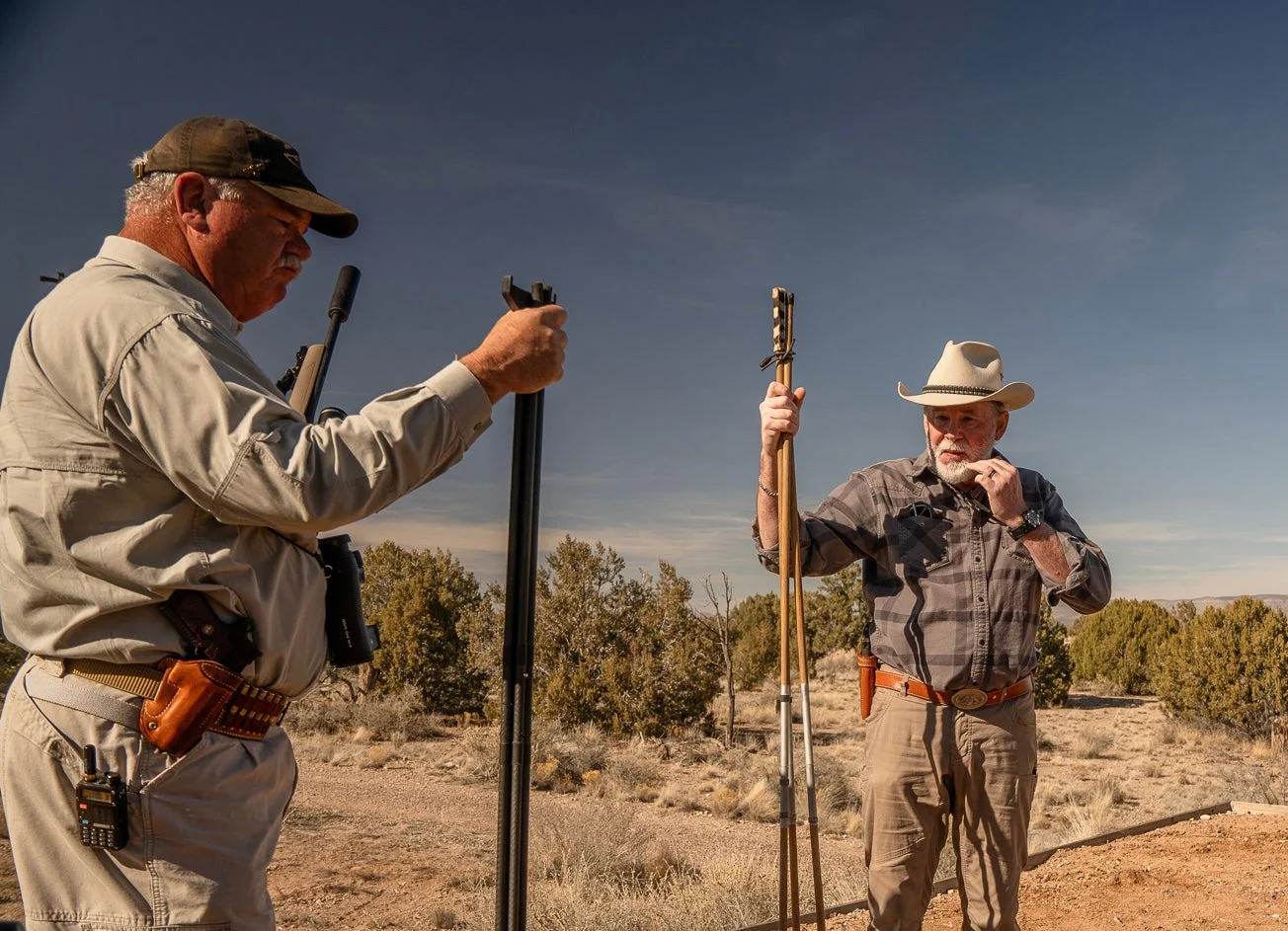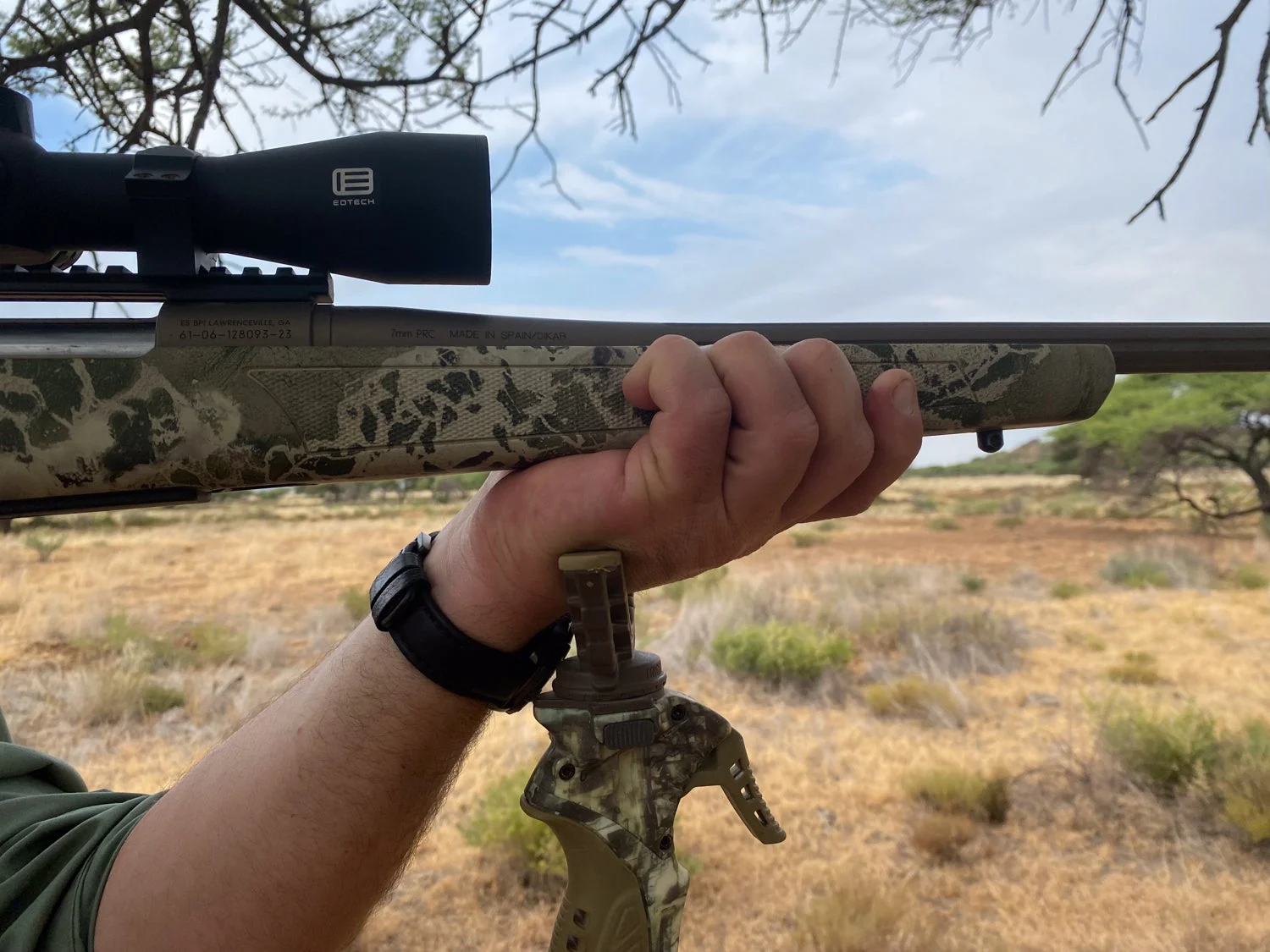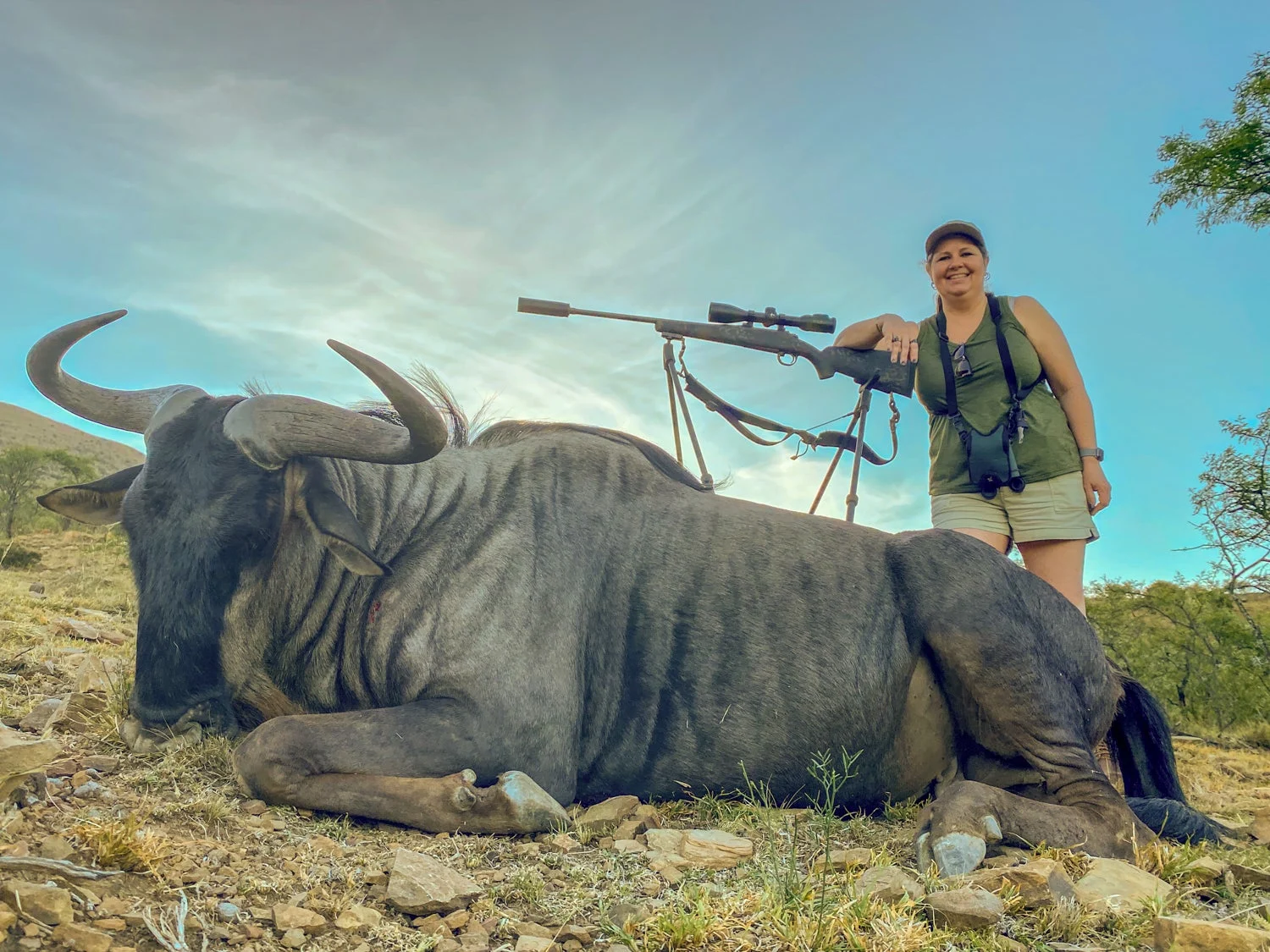_We may earn revenue from the products available on this page and participate in affiliate programs. Learn more ›
_
The first widespread use of shooting sticks probably happened sometime during the 16th century as the matchlock rifle became commonplace. Matchlock shooters benefited greatly from shooting sticks because the rifles were heavy and tended to go bang at an unpredictable moment once the match cord was lit. Thankfully, the lock time of rifles has improved substantially since then, but using shooting sticks still offers a huge benefit to shooters—if you know how to use them properly.
I’m currently in the middle of a 41-day safari, and I’d say more than half the animals stalked and taken so far have been shot from shooting sticks. I’ve never hunted with an African professional hunter who did not carry them. This is partly because high grass and the bush make it problematic to shoot from intermediate positions, like kneeling or sitting. But it’s also because shooting sticks work very well with the spot-and-stalk type of hunting most often employed in Africa. If you’re going on safari, it’s wise to become proficient at shooting off sticks from a standing position, and it can come in very handy in the States too.
Learn how to subscribe to the new Field & Stream magazine here!
Types of Shooting Sticks

While instructing students on the proper use of shooting sticks, Gunsite Academy’s Mario Marchman (left) and the author show two different types of tripod-style sticks, one tradition and one more modern. Sabastian “Bat” Mann
The two-legged shooting stick used to be the standard in hunting circles, but we’ve smartened up since and added another leg for more support in most cases. Variations with a quick-adjust feature, like the Primos Trigger Stick
have come along, and some modern shooting sticks are more like the tripods used by precision long-range shooters.
There are also versions like those from Spartan Precision
that magnetically interface with a proprietary mount on the rifle. And there are now even shooting sticks with four, and believe it or not, five legs, that support the forend and the butt stock. Regardless of the design, if used properly they can all improve your shooting platform. And after all, the rule of the hunting rifle riflemen is, if you can get closer, get closer, and if you can get steadier, get steadier.
Stick Height and Leg Position
Shooting sticks can be used from the standing, kneeling, or seated position, but the standing position is most commonly used in Africa and it’s the most difficult to master—so that is what we will focus on here. Everyone will have a different ideal height for using shooting sticks while standing, but generally you’ll find that when adjusted to about the height of your armpit or slightly lower, they’ll work the best.
With three-leg sticks, set two of the legs toward you but spread out with the third leg away and in line with the target. This keeps your legs from getting tangled with the legs of the stick if you have to adjust your position. It also allows you to put a small amount of forward pressure on the shooting sticks for stability. Set shooting sticks with two legs just like you set the first two legs of a three-leg stick, perpendicular to the direction you want to shoot. But also, place them so the legs contact the ground slightly forward of where the rifle is rested on the sticks. Otherwise you’ll find the rifle wants to pivot almost uncontrollably up and down on the sticks.
Body Position for Shooting Off Sticks

Placing the sticks at the correct height, and positing your body properly—before the shot—are key factors in using shooting sticks to steady your position. Richard Mann
When shooting from the standing position, most hunters tend to set their legs in a fighting stance much like when shooting a handgun. Having your feet in this position seems normal, but if you blade your body excessively, it can make it difficult to control the rifle’s movement from left to right when shooting from sticks.
A more stable shooting position with sticks is to set your feet nearly perpendicular to the rifle and the direction of the target. Put your support-side leg minimally forward—if at all—of your strong-side leg. In this portion, your legs are simply acting as a two-leg support for the rear of your rifle, just as the shooting sticks act as a bipod or tripod for the front of the rifle.
Hand Position When Shooting with Sticks

There are various hand placement techniques when using shooting sticks. One good option is the hold the sticks and the rifle together, as this shooter is doing. Sabastian “Bat” Mann
There are essentially three options for the forward hand placement with shooting sticks. The first is to hold the sticks below the rifle. My testing has shown this to provide the least steadiness, but it can be practical with the trigger-style sticks that offer fast height adjustment, especially if the shot is not too difficult. Another option is to hold the top of the sticks and the rifle together. This technique does a good job of steadying the rifle, but depending on the sticks used and how they interface with the rifle stock—and how tightly you hold both together—it can slightly alter your point of impact and therefore requires practice.

Holding the rifle normally and resting your support hand on the shooting sticks is natural and provides the most control of the rifle during recoil and for follow up shots. Richard Mann
I prefer to hold the rifle forend as normal and then rest the back of my hand or the rifle’s forend on the support area of the shooting sticks. This allows for a normal recoil impulse but more importantly, it allows me to maintain complete control of the rifle. This is a good technique if a fast follow up shot is needed. And it can also be especially beneficial with dangerous game where you may need to quickly step away from the sticks to finish the fight.
Practice Shooting Off Sticks Before the Hunt

The author’s wife took this blue wildebeest from a four-leg shooting stick at about 200 yards. This type shot and equipment are very typical of safari hunting in Africa. Richard Mann
The goal is for your body and the sticks to interact with the rifle so that you minimize the rifle’s movement up and down and right to left. Practice to find the body and hand position that best eliminates this movement for you. This can largely be sorted with dry-fire practice. This is exactly what I did with my wife prior to this safari. For about a week, I worked with her as she dry-fired from the sticks for several minutes each evening.
A blue wildebeest right at 200 yards was her first test. After a short stalk, professional hunter Geoffrey Wayland set the sticks at a height he and Drema had predetermined, and Drema placed the rifle on the sticks. They had to maneuver their shooting platform a bit as the bull meandered through a stand of acacia. But eventually, the animal gave them the opportunity they’d been waiting for. The bullet took out the top of the bull’s heart, he took three steps, and then went down.
Drema shot 10 animals in Africa on this trip, and nine of the shots were from shooting sticks. I’m betting when deer season rolls around this fall, Drema will be wanting shooting sticks of some kind to take with her. You might be able to benefit from them too, no matter whether you’re hunting in Africa, Mississippi, or Alaska.


